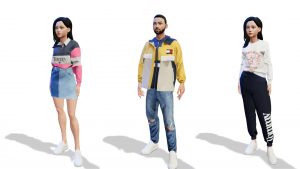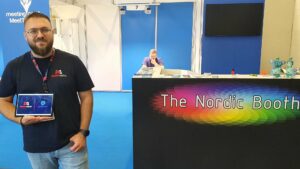Have a look at some of the latest work from Magic Media’s spectacular 2D and 3D artists. For this piece, it was initially created as a tester for a sci-fi project, and this was to be a command hub of sorts for a type of lab outpost. Here we have one of the original concept pieces alongside the same space realised in 3D. The jump from 2D to 3D is big, it’s the difference between a piece of art and a space that players could walk around in or that an audience could dive into.
To take the 2D into a 3D space requires a keen eye and a good line of communication. The feeling and the life lie in the intent from the 2D artist. So, the 3D artist must understand what story was to be told here and what the key elements are that absolutely must be imported. And the devil is always in the detail, something that our art directors are always pushing for. The little things make a world feel lived in and believable.
The work of a 3D artist doesn’t stop at key assets and bringing the story into the third dimension, they must also consider perspective and scale. Some things don’t transition as well into 3D and it’s up to the artist to judge that for themselves. Though our 3D artists aren’t keen on leaving things behind, the 2D work done by the team is tremendous and they prefer to include as much of the original as possible.
In particular, the colour palette must be adhered to. Colour can often be overlooked as an element of what a scene is supposed to tell or show us. It should never draw the viewer’s attention away from key elements or objects, but the colour will immediately set the tone for a scene. For 3D artists, balance is key. Colour must give us a feeling or sense of tone, but it can’t overwhelm the viewer.
In the same vein, they must be aware of the balance of detail. With fixed images like this, our artists are always looking into the level of detail shown in the foreground and background. Too much detail in one area could make another look sparse or empty and too little could make the other areas look overcrowded. The key, as always, is balance. To make the spaces feel real and lived in.
Work like this takes approximately one month to complete and our team utilize tools such as 3DS Max and ZBrush for modeling, Substance Painter and Designer for texturing, and finally Unreal Engine for a game engine in the final stages. Secondary tools for finishing touches, adding details, and enhancements also include Photoshop, After Effects, and Rizom UV.
If you’d like to see what our 2D and 3D artists can create for you, get in touch. Let’s see what artistic magic we can do for you!

The second episode of The Blockchain Gaming Podcast
Read More
